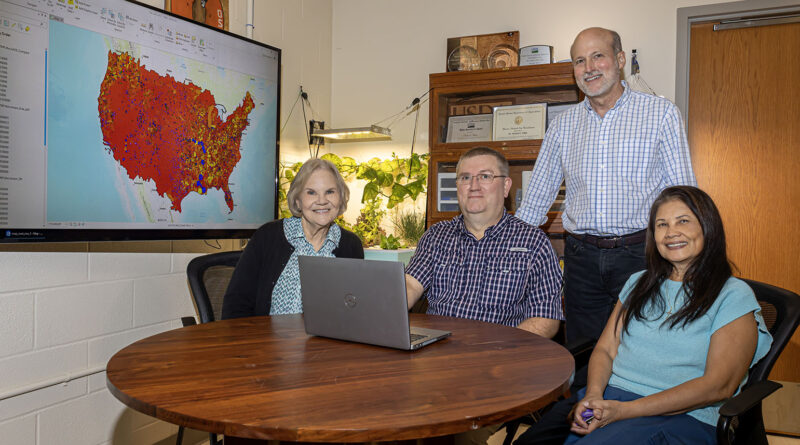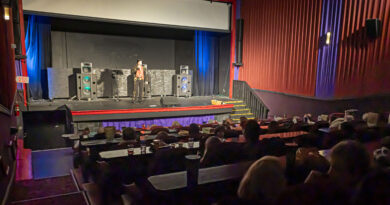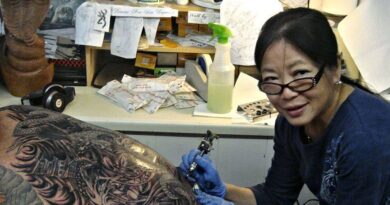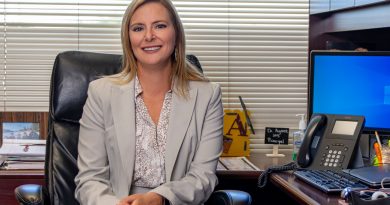Century of Science
Blackland Research and Extension Center works to develop new technologies to better manage natural resources
Story and photos courtesy of the Texas A&M AgriLife Blackland Research and Extension Center Staff & Photos by SKEEBO
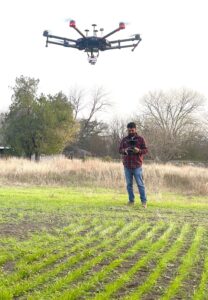 Out on the southeast edge of Temple between Fifth Street and Old Highway 95 stands a collection of plain light brown buildings. Known as “Blackland” to longtime residents, it is a joint facility of Texas A&M AgriLife Research and the U.S. Department of Agriculture’s Agricultural Research Service — and a world-recognized leader in agriculture and natural resource management.
Out on the southeast edge of Temple between Fifth Street and Old Highway 95 stands a collection of plain light brown buildings. Known as “Blackland” to longtime residents, it is a joint facility of Texas A&M AgriLife Research and the U.S. Department of Agriculture’s Agricultural Research Service — and a world-recognized leader in agriculture and natural resource management.
Texas A&M opened a research station in Bell County in 1909 to study and improve farming practices in Texas’ Blackland Prairie, a roughly 300-mile belt of grasslands stretching from the Red River to San Antonio. Named for its dark, alkaline clay soil, the region was excellent for farming and had been almost entirely claimed for cultivation by the end of the 19th century. However, the fertile “black gumbo” clay — which can swell and shrink dramatically depending on rainfall and can develop chasm-like cracks in dry seasons — was susceptible to soil compaction, erosion and weeds. The heavy soils also encouraged cotton root rot. Early research and education efforts focused on identifying crops best suited to Blackland soil and methods to address these particular challenges. Adding manure and crop residues to the soil proved to lighten the soil’s texture and reduce compaction; tilling the soil and rotating crops helped to reduce weeds.
In 1927, A&M moved the station, now named the Texas A&M AgriLife Blackland Research and Extension Center, to its present 542-acre site. Research expanded to include such subjects as hybrid corn breeding and beef cattle grazing and feeding. Blackland scientists began conducting soil and water research in cooperation with the USDA’s Soil Conservation Service in the 1930s, and in 1972 the USDA-ARS established and built the Grassland Soil and Water Research Laboratory on site.
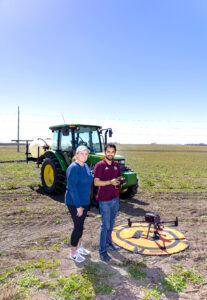 Beginning in the late 1970s, scientists at Blackland/Grassland began developing and using computer models to understand and predict processes like the growth of crops and erosion of soils. Computer simulation models allow scientists to analyze these types of complex processes by incorporating and digesting large amounts of information — including data on soils, weather, particular crops, and crop management and irrigation practices, as well as algorithms that describe biophysical processes such as the movement of water, nutrients, and contaminants through soil and crops and as runoff. The information and computational capacities of these models also allowed scientists to expand the scope of their research from the Blackland Prairie of Central Texas to regions around the state, nation and world.
Beginning in the late 1970s, scientists at Blackland/Grassland began developing and using computer models to understand and predict processes like the growth of crops and erosion of soils. Computer simulation models allow scientists to analyze these types of complex processes by incorporating and digesting large amounts of information — including data on soils, weather, particular crops, and crop management and irrigation practices, as well as algorithms that describe biophysical processes such as the movement of water, nutrients, and contaminants through soil and crops and as runoff. The information and computational capacities of these models also allowed scientists to expand the scope of their research from the Blackland Prairie of Central Texas to regions around the state, nation and world.
As a result of these advances, in the early 1980s the USDA Natural Resources Conservation Service placed a team at Blackland/Grassland to study how to reduce agricultural soil erosion. This team of Texas A&M and USDA scientists has expanded over the years and is now recognized worldwide for its leadership in the areas of agricultural soil and water conservation. For the last 20 years, USDA-NRCS has also housed the national Conservation Effects Assessment Project for U.S. croplands at Blackland/Grassland. This project, led until his recent retirement by Dr. Lee Norfleet, uses computer models developed at Blackland/Grassland to assess the environmental effects of conservation practices on soil and water quality on croplands throughout the U.S.
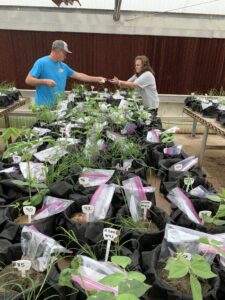 In the 1990s, this increased recognition led Texas A&M, in cooperation with the Temple Economic Development Board, to expand facilities at Blackland, and over the past several years USDA-ARS has invested $14 million in renovation of Grassland facilities. The combined Texas A&M and USDA programs at Blackland/Grassland now house 90 employees, 25 of which have PhDs in agricultural and related areas. Blackland and Grassland are in the process of adding four new permanent scientist positions in order to keep expanding the impacts of their programs in Texas, the U.S. and around the world.
In the 1990s, this increased recognition led Texas A&M, in cooperation with the Temple Economic Development Board, to expand facilities at Blackland, and over the past several years USDA-ARS has invested $14 million in renovation of Grassland facilities. The combined Texas A&M and USDA programs at Blackland/Grassland now house 90 employees, 25 of which have PhDs in agricultural and related areas. Blackland and Grassland are in the process of adding four new permanent scientist positions in order to keep expanding the impacts of their programs in Texas, the U.S. and around the world.
Dr. Raghavan Srinivasan is director of Blackland, director of Texas A&M’s Center for Integrated Analysis for Agriculture and Natural Resources, and the holder of the $1 million Neville P. Clarke ’54 Endowed Chair at Texas A&M. Srinivasan says the future of the joint facility and the field of agricultural and natural resource management is exciting. “We continue to make huge strides in the areas of computer modeling, data collection through remote sensing and analysis, and machine learning. So our ability to analyze and understand our environments, and to react to changes in these environments, just keeps improving. It’s a pivotal time to be working in this field.” It’s quite an impressive legacy and promising future for an unassuming campus that most Temple residents may never have noticed!
COMPUTER SIMULATION MODELING
As noted above, some of the most groundbreaking work conducted at Blackland/Grassland has been in the area of computer simulation modeling. Many important models have been developed and are maintained at the Temple facilities. These models are widely used by local water management organizations, state and federal agencies, and agriculture and environmental organizations worldwide:
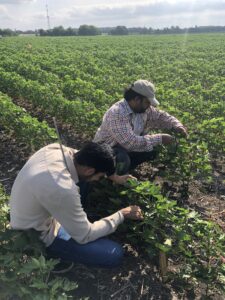 Dr. Jeff Arnold of ARS has been responsible for developing the Soil and Water Assessment Tool, the world’s most widely used model of hydrology, soil erosion, water quality, and agricultural production in small and large watersheds.
Dr. Jeff Arnold of ARS has been responsible for developing the Soil and Water Assessment Tool, the world’s most widely used model of hydrology, soil erosion, water quality, and agricultural production in small and large watersheds.
Over the last decade, Srinivasan has led the team of Blackland and Grassland scientists that developed the Hydrologic and Water Quality System, an easily used software package that makes it easy to use SWAT to estimate the effects of agriculture on water quality. Customized versions of HAWQS are now being used by the Environmental Protection Agency, state and local water management agencies in Texas and other states, and a number of countries around the world.
Dr. Jaehak Jeong of Texas A&M leads the development and use of the Agricultural Policy/ Environmental eXtender, a model developed to predict the effects of a wide variety of agricultural systems and management practices on crop and livestock production. APEX and SWAT are the principal models used by the CEAP project to estimate the effectiveness of USDA conservation programs on soil and water quality.
Dr. Jim Kiniry of ARS is responsible for developing crop models used in both SWAT and APEX, which are the key water, soil, and crop modeling components used by the CEAP project for its national assessments.
Dr. Mike White of ARS has developed the Agricultural Conservation Reduction Estimator, an easily used calculator that estimates the effects of applying a variety of agricultural “best management practices” on sediment and nutrient losses from croplands anywhere in the U.S. White has also developed the Small Watershed nutrient Forecasting Tool, to rapidly estimate sediment and nutrient losses from small watersheds in the U.S. Both ACRE and SWIFT use the outputs of SWAT to create easily used databases of sediment and nutrient losses from agricultural fields.
CURRENT AND RECENT PROJECTS
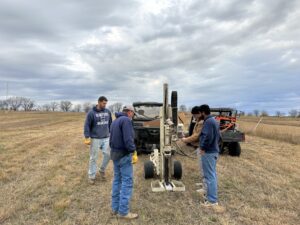 Just as in its earliest days as an A&M research facility, Blackland/Grassland continues to conduct research on local issues and promote the health of the Central Texas community.
Just as in its earliest days as an A&M research facility, Blackland/Grassland continues to conduct research on local issues and promote the health of the Central Texas community.
Recent projects in Central Texas include efforts led by Dr. June Wolfe to improve soil management and develop a flash flood warning system at Fort Hood. Other research, led by Srinivasan and supported by the Texas State Soil and Water Conservation Board (also located in Temple), has evaluated water quality in the Lampasas, Leon, and Bosque Rivers, as well as other rivers in Texas.
Srinivasan is also leading research funded by state and local water supply organizations to use computer models with water quality monitoring to reduce water pollution in rivers and water supply reservoirs. Texas A&M and ARS scientists at Temple are also working with the U.S. Army Corps of Engineers to improve the Corps’ ability to understand and manage the effects of agriculture on the water quality of major water supply reservoirs throughout the U.S.
Jeong is working with NRCS staff and Texas A&M scientists in Stephenville to develop management guidelines for dairy manure management for a variety of soils, crops, and weather conditions. The research plan includes field experiments, monitoring of soil and water quality and modeling of nutrients, antibiotics, and bacteria in runoff water. The study will apply a machine learning technique to scale up results to the state and national scale, with potentially significant consequences. “The goal is to use what we learn in the lab and in field experiments to ultimately provide guidance across U.S. croplands and pasturelands.”
In work supported by the Bureau of Land Management, Jeong is also using APEX to simulate soil erosion (by wind and water), salt transport, and vegetation growth in the Colorado River Basin.
Dr. Gurjinder Baath, the newest faculty member at Blackland, is working with IBM to use artificial intelligence and “big data” to develop a phone app to help farmers make real-time decisions on when and how much to irrigate their crops, based on soil and crop species data, predicted weather and other factors. The app could benefit farmers in Central Texas and worldwide.
T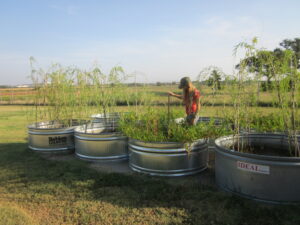 hese days, much of the work of Blackland/Grassland scientists is international in scope. Jeong recently completed work with The Nature Conservancy to evaluate the effects of agricultural management and climate change on soil erosion in the Okavango basin of western Africa, a UNESCO World Heritage site. In addition, he is working with the Rural Development Agency of South Korea to simulate plant growth and soil processes in Korean rice paddies. Jeong is leading development of mathematical models while RDA collects field data used in model evaluation.
hese days, much of the work of Blackland/Grassland scientists is international in scope. Jeong recently completed work with The Nature Conservancy to evaluate the effects of agricultural management and climate change on soil erosion in the Okavango basin of western Africa, a UNESCO World Heritage site. In addition, he is working with the Rural Development Agency of South Korea to simulate plant growth and soil processes in Korean rice paddies. Jeong is leading development of mathematical models while RDA collects field data used in model evaluation.
With over a decade of funding from USAID, a team of Texas A&M scientists from Blackland and College Station led by Srinivasan have developed a system to evaluate the impacts of small-scale irrigation on agricultural production and farm family wellbeing in Ethiopia, Ghana and beyond.
Dr. Javier Osorio leads another FAO-funded project to implement the Predictive Livestock Early Warning System (PLEWS) for monitoring livestock nutrition and health in East Africa and Mongolia. PLEWS is a tool like no other, that integrates modeling, remote sensing, and machine learning to do almost real-time predictions that are used by locals to improve their decision-making.
Temple scientists are also expanding the reach of their models and methods by sharing their knowledge and resources with scientists around the world. For over 20 years, Blackland/Grassland has conducted one or more international conferences annually, usually in cooperation with a major foreign or U.S. university, to train users of the agricultural computer models developed in Temple. Conferences usually include 150 to 200 participants who present papers concerning their applications of the SWAT, APEX, PLEWS, and other tools developed in Temple. This year conferences are scheduled for Aarhus, Denmark in June and Ifrane, Morocco in October.

